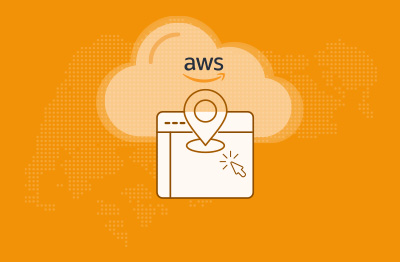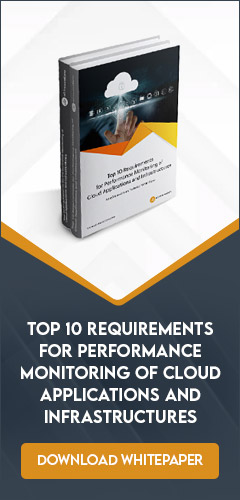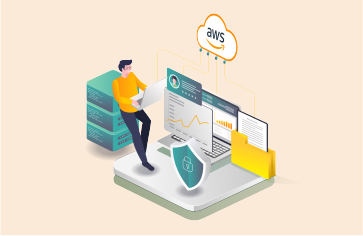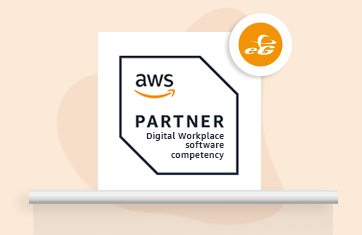Amazon Web Services (AWS) recently released a new cloud deployment option – ”Dedicated Local Zones” targeted at public sector, government and regulated industry use cases. Many customers still rely on on-premises infrastructure to meet regulatory and compliance requirements such as data localization. You can read the details of the AWS announcement including which services Dedicated Local Zones will support, here: Announcing AWS Dedicated Local Zones (amazon.com). A more in-depth explanation is given in a very insightful AWS blog, which I’d highly recommend reading as it contextualizes this new product with the context of AWS’s wider security and digital sovereignty strategies, see: AWS Digital Sovereignty Pledge: Announcing new dedicated infrastructure options | AWS Security Blog (amazon.com).
This new offering from AWS recognizes that there remains a strong market for running certain types of workloads on-premises. Indeed a few months ago, my colleague covered the opportunities for local MSPs offered by the strong demand for localized infrastructure, see: How MSPs can Capitalize on the Rush to Localize IT Services. Now we see hyperscale cloud giants such as AWS chasing these opportunities too.
What are AWS Local Zones?
AWS Local Zones allow you to use select AWS services, like compute and storage services, closer to more end-users, providing them very low latency access to the applications running locally. AWS Local Zones are also connected to the parent region via Amazon’s redundant and very high bandwidth private network, giving applications running in AWS Local Zones fast, secure, and seamless access to the rest of AWS services.
How are Dedicated Local Zones Different from Local Zones?
AWS Dedicated Local Zones are Local Zones that are built for the exclusive use by a customer or community. Dedicated Local Zones offer the same benefits as Local Zones and, as an additional benefit, AWS works with customers to provide the security and compliance features that they need on their own private zones. AWS Dedicated Local Zones are fully managed by AWS and built exclusively for a customer and placed in a customer-specified location or datacenter.
Most of the questions you are likely to have about AWS Designated Local Zones are covered in an excellent FAQ, see: Dedicated Local Zones FAQs Page (amazon.com).
What about AWS Outposts? How are AWS Dedicated Local Zones Different from AWS Outposts?
Outposts is an existing family of fully managed solutions delivering AWS infrastructure and services to on-premises or edge locations. Outposts lets you run some AWS services locally and connect to a broad range of services available in the local AWS Region. Outposts comes in two types of offerings: Outposts rack and Outposts servers, with which you can run applications and workloads on-premises using the same AWS infrastructure, services, tools, and APIs as in AWS Regions. Outposts met on-premises requirements for some customers. However, there remains significant management overheads as whilst Outposts rack installation is handled by AWS, Outposts server installation is done by the customer or a third-party of their choosing. Details of “How are AWS Dedicated Local Zones different from AWS Outposts?” are covered, here: Dedicated Local Zones FAQs Page (amazon.com).
Singapore Government – The First Customer of AWS Local Zones

The first customer to launch a Dedicated Local Zone is the Singapore Government’s Smart Nation and Digital Government Group (SNDGG). This isn’t a surprise to us as eG Innovations has a large office and significant customer base in Singapore, where we are involved in numerous digital transformation projects leveraging eG Enterprise.
Cloud uptake by governmental organizations in Singapore has been significant because of the country’s Government on Commercial Cloud (GCC) framework initiative. The “cloud agnostic” GCC platform enables agencies to use cloud service providers such as Amazon Web Services (AWS), and currently hosts over 600 government digital services. So far, government agencies across Singapore have collectively migrated close to 60 percent of workloads to the commercial cloud and are on track to achieving their target of 70 percent in 2023. New cloud offerings, such as AWS Dedicated Local Zones will enable more workloads that remained on-prem because of compliance needs to be migrated and managed.
Large-scale government transformation projects drive innovation and new ways to consume cloud and hybrid-models. It’s a trend we are also seeing in our Middle Eastern markets, especially around initiatives such as KSA Vision 2023.
The demand for localized services in Europe has also seen Amazon make a second announcement (October 2023) of an “AWS European Sovereign Cloud”, Amazon-Web-Services-to-Launch-AWS-European-Sovereign-Cloud (aboutamazon.com), in which they indicate that customers who have stringent isolation and in-country data residency needs will be able to leverage existing offerings like AWS Outposts or AWS Dedicated Local Zones with the new cloud offering.
Multi-tenancy and Dedicated Local Zones
As announced by Matt Garman, SVP, AWS Sales and Marketing at Amazon – “With Dedicated Local Zones, customers can use the multitenancy features of the cloud to efficiently enable adoption across multiple AWS accounts created by a customer’s community of agencies and business units, and reduce the operational overhead of managing on-premises infrastructure.”
How eG Enterprise Helps with Hybrid Cloud and On-Prem Strategies
Like AWS, eG Innovations recognizes that many customers have on-premises needs and are subject to regulatory compliance. As such we are committed to feature parity and supporting eG Enterprise whether the deployment is on-premises, self-hosted on cloud or accessed via our fully managed SaaS services. The eG Enterprise architecture also supports multi-tenancy and associated use cases.
As new hybrid models such as AWS Dedicated Local Zones emerge, the options for Cloud vs. on-prem widen and organizations’ needs change as their business scales or evolves. eG Enterprise offers a fully flexible transferable license model that allows our licenses to be moved from monitoring on-prem technologies to cloud ones and vice-versa allowing migrations to be baselined and assessed for success but also allowing monitoring to transition alongside users without leaving redundant shelfware, see: How eG Enterprise IT Monitoring Licensing is Cost-Effective and Flexible for details.
Those adopting fully managed services from global cloud providers such as AWS will need to navigate new ways of resolving issues, whilst AWS assumes responsibility for the infrastructure, organizations will now have to demonstrate when fault lies with the AWS services and protect their DevOps from cloud provider outages. See: AWS Cloud Case Study: Troubleshooting Application Performance for a good understanding of the challenges of shared responsibility with cloud hosted applications. Information on how IT teams can best handle and track AWS outages is covered in: How to Protect your IT Ops from Cloud Outages.
Many of those adopting AWS technologies will choose agnostic third-party tools rather than AWS specific CloudWatch to avoid vendor lock in and retain all options for their future on-prem, multi or hybrid cloud needs. Additional benefits include avoiding the complexity of setting up and maintaining CloudWatch and avoiding the costs of CloudWatch at scale, see: AWS Cloudwatch Alternatives for more details.
eG Enterprise is an Observability solution for Modern IT. Monitor digital workspaces,
web applications, SaaS services, cloud and containers from a single pane of glass.
Learn More
- AWS’s blog explaining the new offering’s place within their wider security and digital sovereignty strategies, see: AWS Digital Sovereignty Pledge: Announcing new dedicated infrastructure options | AWS Security Blog (amazon.com). An excellent detailed overview on the product launch and what it means is given by Aaron Tan at TechTarget, see: AWS debuts Dedicated Local Zones with Singapore government as first customer | Computer Weekly (Aaron was a technology correspondent at The Straits Times, Singapore’s national newspaper, and a senior journalist at ZDNet Asia covering enterprise technology and has a deep understand of the factors that drove AWS to launch this product).
- AWS FAQ: Dedicated Local Zones FAQs Page (amazon.com).
- For more information on cloud repatriation and migration like trends, see: On-premises, Cloud First or Cloud Repatriation – What’s the Trend? Which is Best? | eG Innovations
- More on the blurring of cloud and on-prem is covered within – What is Supercloud? What to consider when monitoring and observing a Supercloud? | eG Innovations
- For details on eG Enterprise monitoring of AWS and other Cloud provider services, see: Cloud Monitoring Tools for Public, Hybrid and Multi clouds | eG (eginnovations.com).



 Bhaalakrishnan is a Senior Manager at eG Innovations. He has experience in software development, DevOps, support, and delivery management for the retail and banking industries. He has successfully managed and delivered projects using cloud platforms such as AWS and Azure. He also has work experience in a diversified environment with inclusive diversity and culture.
Bhaalakrishnan is a Senior Manager at eG Innovations. He has experience in software development, DevOps, support, and delivery management for the retail and banking industries. He has successfully managed and delivered projects using cloud platforms such as AWS and Azure. He also has work experience in a diversified environment with inclusive diversity and culture. 



